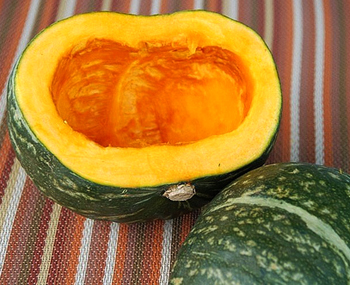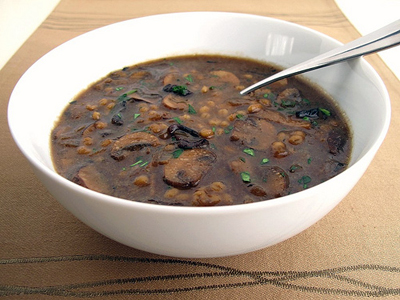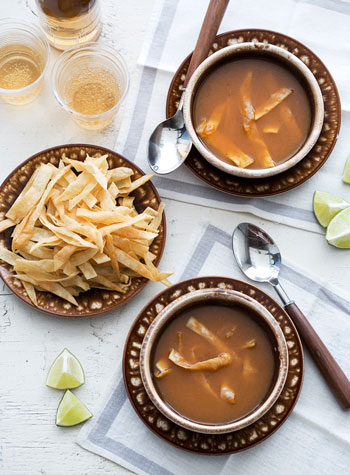 When you live in the Midwest, northern Minnesota to be more exact, where below-zero temperatures are no big deal, but just part of winter life, a hot bowl of hearty homemade soup is highly appreciated.
When you live in the Midwest, northern Minnesota to be more exact, where below-zero temperatures are no big deal, but just part of winter life, a hot bowl of hearty homemade soup is highly appreciated.
A few weeks ago I received a copy of "Enlightened Soups," by Camilla V. Saulsbury. As I was in the midst of holiday preparations, I didn’t have much time to look through the cookbook. But as the New Year rang in, I was ready to get back to a more healthful eating routine. And, during the first week of the new year, a few of Camilla’s Enlightened Soups have been a part of my lower fat, lower calorie eating plan.
As I paged through the cookbook filled with more than 135 light and healthful soup recipes, I soon noticed the recipes used ingredients that can be found in most supermarkets and that the soups did not take long to make. All can be prepared in an hour or less, some in just 20 minutes. Each recipe has a small illustration that shows how long it takes to prepare the soup. As I soon discovered, enlightened soups don’t need to cook for hours to deliver wonderful flavor.
Another feature of "Enlightened Soups" is the nutritional information included with each recipe. I first tried Red Lentil Mulligatawny. It was rich with flavor and took 45 minutes to prepare from start to finish.

 You've seen it at the market. You've picked it up and wondered,
You've seen it at the market. You've picked it up and wondered,  I love mushrooms for their flavor, texture, and meatiness. It's almost odd to say so, but mushrooms do have a texture and deep flavor that reminds me of meat. One of my favorite comfort foods is a bowl of mushroom soup. For me it's just as satisfying as a bowl of chili. Like little sponges, mushrooms easily take on the flavors of other ingredients that they cook with. Sautéing them in garlic or onions makes them especially wonderfully robust. This soup uses cremini mushrooms, the brown button type, and dried porcini mushrooms, which have an intense almost nutty flavor. This soup has a lot of good going for it.
I love mushrooms for their flavor, texture, and meatiness. It's almost odd to say so, but mushrooms do have a texture and deep flavor that reminds me of meat. One of my favorite comfort foods is a bowl of mushroom soup. For me it's just as satisfying as a bowl of chili. Like little sponges, mushrooms easily take on the flavors of other ingredients that they cook with. Sautéing them in garlic or onions makes them especially wonderfully robust. This soup uses cremini mushrooms, the brown button type, and dried porcini mushrooms, which have an intense almost nutty flavor. This soup has a lot of good going for it. Eat your beets! We've all heard that from our moms quite often as kids. Unfortunately it was more often canned beets that we were persuaded to eat. As a curious eater, I've come to appreciate beets in many different preparations. I especially love them roasted in salads. But have you ever thought of eating them raw? Sliced very thinly, beets and other root vegetables, make great salads. Yes, it's possible to slice them thin with a knife, but a mandoline does the job better than anything else to get paper-thin shavings.
Eat your beets! We've all heard that from our moms quite often as kids. Unfortunately it was more often canned beets that we were persuaded to eat. As a curious eater, I've come to appreciate beets in many different preparations. I especially love them roasted in salads. But have you ever thought of eating them raw? Sliced very thinly, beets and other root vegetables, make great salads. Yes, it's possible to slice them thin with a knife, but a mandoline does the job better than anything else to get paper-thin shavings. Let’s pretend for just a tiny moment that it has not been in the 80s here in Los Angeles over the past few days. We can also pretend that I did not lay outside in shorts and no t-shirt in the sun on a big madras print blanket with a book and three small dogs who insisted on standing on my back, butt and head. And let’s also pretend that yesterday I didn’t get home and fight the urge to run straight to the grill with a beer in my hand.
Let’s pretend for just a tiny moment that it has not been in the 80s here in Los Angeles over the past few days. We can also pretend that I did not lay outside in shorts and no t-shirt in the sun on a big madras print blanket with a book and three small dogs who insisted on standing on my back, butt and head. And let’s also pretend that yesterday I didn’t get home and fight the urge to run straight to the grill with a beer in my hand.
